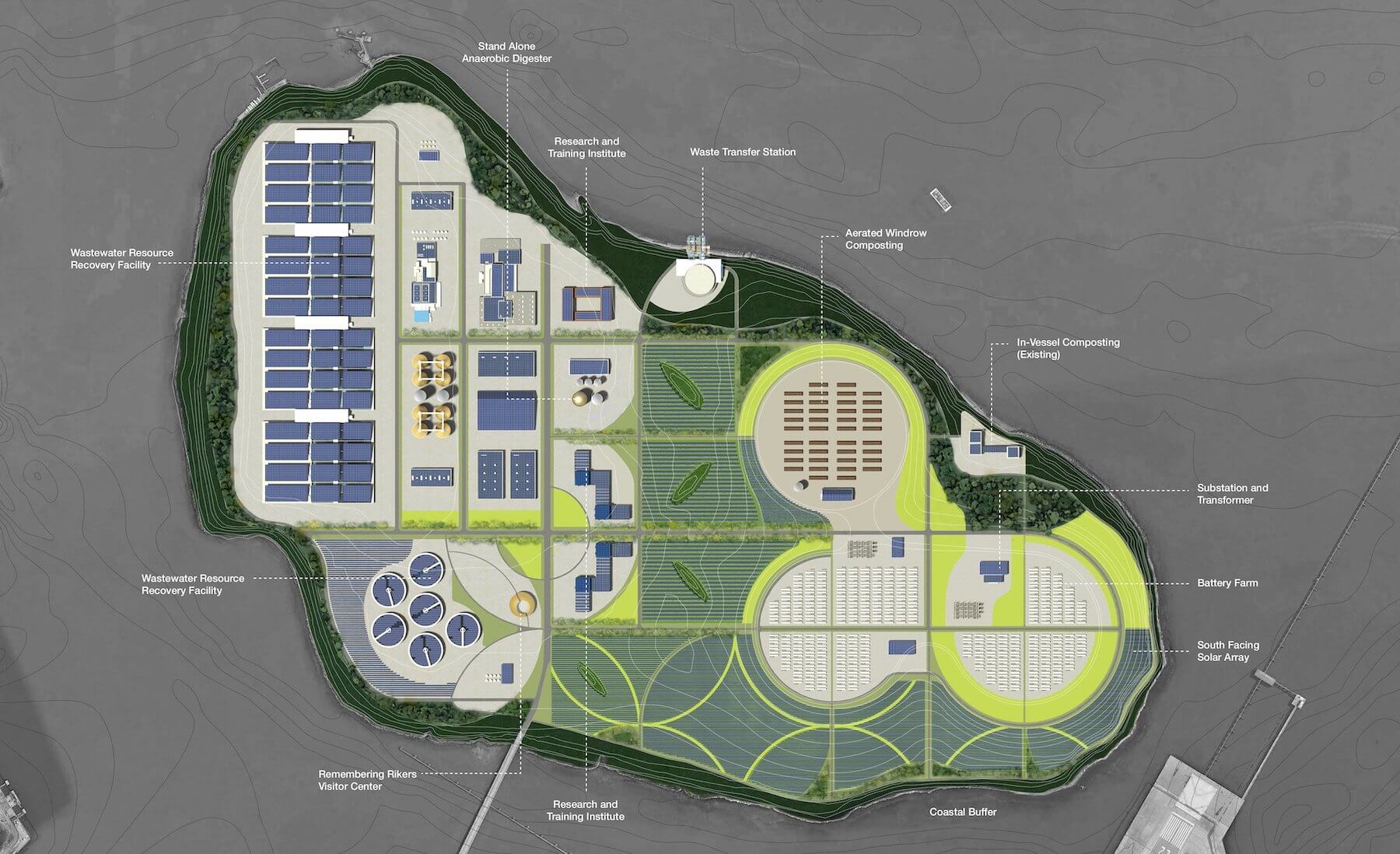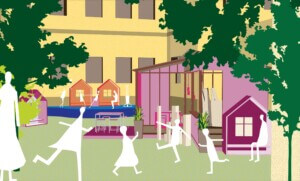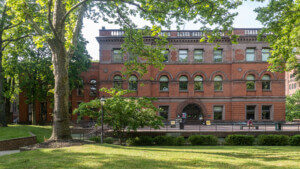A new 30-page report released by the Regional Plan Association (RPA) offers a restorative, sewage treatment plant–anchored vision of redemption and renewal for an island long populated by—and synonymous with—New York City’s troubled main jail complex.
Responding to a larger (and not without controversy) decarceration plan in which said troubled jail complex, Rikers Island, will be shuttered and replaced with a network of “modern, smaller, humane” detention facilities spread across all five borough save for Staten Island by 2027, the RPA teamed with the Rhode Island School of Design (RISD) to reimagine the 413-acre island in the East River as a citywide hub for green energy production. As envisioned by the RPA and RISD team, the island’s “noxious infrastructure” would be replaced with sprawling photovoltaic installations, a composting and recycling hub, and wastewater treatment facility.
Heralded by Costa Constantinides, former New York City Councilmember and sponsor the Renewable Rikers Act, as an “exciting step forward in envisioning a just transition for the future of the island,” RPA’s and RISD’s A Plan For Renewable Rikers report also proposes a “research and training institute” that would help to prepare previous incarcerated New Yorkers most affected by the disgraceful, dysfunctional legacy of Rikers Island for jobs in the clean energy sector and related fields.

“RPA is proud to build on the work of environmental and criminal justice advocates in presenting a plan to reimagine Rikers’ 400 acres as a green energy hub that strengthens the city’s resilience to climate change and delivers substantial community benefits—especially for the Black, Brown and poor New Yorkers who have borne the brunt of mass criminalization and noxious energy facilities,” said Moses Gates, the RPA’s Vice President For Housing and Neighborhood Planning in a statement.
“Following through on the vision for a renewable Rikers is a can’t miss opportunity for the City to reach its decarbonization goals while serving as a national model for climate-focused redistributive justice,” Gates added.
The report was commissioned by RPA as part of its 2022 Richard Kaplan Chairs for Urban Design Fellowship. The resultant design is based on an initial vision of the Renewable Rikers coalition, an alliance of more than 40 organizations representing people formerly incarcerated on Rikers Island and their families along with communities impacted by environmental racism and allied nonprofit groups focused on environmental and social justice causes.
New York City Council voted to permanently close the Department of Correction (DOC)-operated Rikers Island in 2019. Its various facilities, including a total of 10 major jails, are legally mandated to cease operations by August 2027 as ownership of the island shifts from the DOC to the Department of Citywide Administration Services. For many, 2027 (a delay from the original 2026-aiming closure) couldn’t come soon enough as the already-grim situation on Rikers, long known for its violence and inhumane conditions, continues to devolve day by day, week by week. City Comptroller Brad Lander spoke of the wide-ranging impacts—economic, environmental, spiritual—that a transformation like the one outlined in the newly released report could yield, noting that “re-envisioning the island as a place for renewable energy infrastructure is the embodiment of a just transition—where environmental justice prevails.”
As detailed in the RPA’s roadmap for a post-carceral Rikers Island, the plan presents an opportunity to shutter blighted, aging waste and energy infrastructure surrounding the island in neighborhoods on the Bronx and Queens waterfronts and build out new, cleaner facilities on the island itself. In turn, large tracts of land currently dominated by such infrastructure would be freed up for community use, potentially as future parkland. Specifically, a total of four neighborhood-based wastewater plants in the Bronx and Queens would be decommissioned and replaced with a single, state-of-the-art facility on Rikers Island. This move would liberate 182 acres of real estate for “community determined priorities and cleaning up local waterways,” a press announcement detailed.
As for renewable energy, the new Rikers Island would enable the phasing out of nearby peaker power plants thanks to a solar production facility capable of generating 1,500 MW of energy storage and 275 MW of solar power. The island’s composting and recycling center, as outlined in the plan, would be robust enough to process 34 percent of New York City’s waste stream—or about 365,000 tons of organic waste annually.
“The carefully thought out designs we’ve presented in this report show how the entire island can be activated as an energy hub for all of New York City, while freeing large swathes of neighboring boroughs from aging energy infrastructure,” said Andrea Johnson, Assistant Professor in the Master of Landscape Architecture program at RISD.
You can read A Plan For Renewable Rikers in full here.











